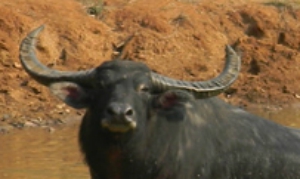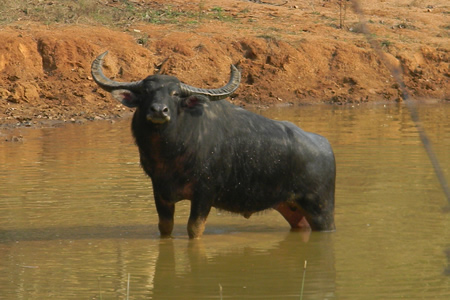13
Nov
5 year plan for wild buffalo conservation
0 Comment
A wild buffalo in Udanti
Nagpur, November 13, 2012: In a boost to the conservation of the wild buffalo, officials from the forest departments of four states met with experts from the IUCN’s Asia Wild Cattle Specialist Group, Satpuda Foundation, NDRI, CCMB, Edinburgh Zoo and Wildlife Trust of India and drafted an action plan to save this endangered animal.
A plan was developed after a three-day workshop with focus on the population in Central India. “The goal is to establish a viable and genetically acceptable wild buffalo population under diverse secure areas and conditions in Central India through various approaches in five years,” said SWH Naqvi, PCCF (Wildlife), Maharashtra.
The wild buffalo (Bubalis arnee) is classified as ‘Endangered’ in the IUCN Red List and protected under Schedule I of the Wild Life (Protection) Act, 1972. About 3,600 individuals remain in India of which less than 100 are in Central India, the rest being in Assam.
“Earlier, this was a single contiguous population ranging across the Gangetic and Brahmaputra plains,” says Dr Rahul Kaul, Chief Ecologist, WTI. “Poaching and habitat loss have restricted this population outside Assam to the states of Maharashtra and Chhattisgarh where they occur in extremely low numbers. The minimum number required to hold a genetically viable population needs to be ascertained and worked towards.”
Inter-breeding of wild buffaloes with domestic buffaloes was once a major concern to conservationists. Recent reports from CCMB have indicated that the surviving population of wild buffaloes from Assam as well as Central India show genetic similarity and are relatively pure. Further genetic studies will be required to establish a parameter for acceptable ‘wild’ buffaloes from Assam which can then be used for both augmentation and reintroduction programs.
“The Central India wild buffalo population cannot be recovered by the ongoing unassisted breeding program,” says Dr NVK Ashraf, Chief of Conservation, WTI. “Recovery is possible by supplementing depleted populations by wild or captive bred individuals. This has been discussed in the workshop.”
A final document is expected to be finalised soon.
Photo: Dr RP Mishra










